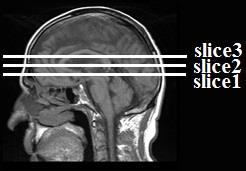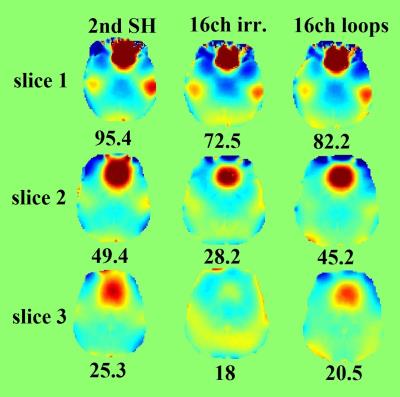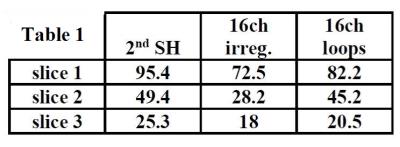4338
B0 shimming in a small volume at 9.4T – irregular coil geometry setup vs. loop coil setup1High Field MRI, Max Planck Institute for Biological Cybernetics, Tuebingen, Germany, 2Empirical Inference, Max Planck Institute for Intelligent System, Tuebingen, Germany, 3Dept. for Biomedical Magnetic Resonance, University of Tuebingen, Tuebingen, Germany
Synopsis
At high magnetic fields B0 inhomogeneities are more pronounced and B0 shimming becomes very important. Dynamic or slice based shimming always provides better results than global or shimming in a volume. For shimming in a small volume, we propose a setup composed of irregularly shaped coils. Performances of the proposed setup are compared to performances of the configuration composed of only loop elements. The setup with irregular coils shows improved performances over the setup containing only loop elements. Future work should validate performances of the proposed setup on different volume sizes and different brain’s B0 maps.
Introduction
B0 shimming is very important especially at high magnetic fields. The susceptibility differences between tissues and air cavities increase for increasing main magnetic field which cause different image artifacts. A method to reduce B0 inhomogeneities has been proposed recently1,2 in the form of a close fitting array of conductive loops placed between the RF coil and head. In some recent publications3,4 optimizations of the individual coil’s geometry have been proposed in order to further improve B0 shimming performance. Dynamic or slice-based shimming always provides better results than global shimming or shimming on a certain volume. In this work we present numerical studies of the shimming performance in a small volume of a setup composed of irregularly shaped coils and compare it to configurations composed of only loop elements.Methods
We synthesized a 16 channel configuration with 15 irregularly shaped coil elements and one circular loop (loop was placed around shim cylinder) by optimizing jointly independent parameters describing the geometry and position of every single coil (for a loop only its position was used as a parameter). Coils were placed on a cylinder which length was 300mm and diameter 360mm. The optimization was performed on three slices simultaneously (Figure 1) based on a B0 field map acquired within a brain of a volunteer. The resulting setup is shown in Figure 2. The second 16 channel setup contained only loop elements. The loops were evenly distributed in two rows and the diameter of each loop was 120mm (Figure 2). The dimensions of a cylinder containing only loop elements were the same as dimensions of cylinder with irregularly shaped coils. The 30mm thick volume that includes slices 1, 2 and 3, was shimmed with both setups. The standard deviation on slices 1, 2 and 3 was then calculated (Table 1, Figure 3). The slices 1, 2 and 3 were also shimmed individually with both setups and results are in Table 2.Results and discussion
Three representative slices were observed for both volume and slice based shimming. In volume shimming, shim performance of the setup with irregularly shaped elements was improved compared to the setup with only loop elements (Table 1, Figure 3). Improvement was around 15% on slices 1 and 3 and 60% for slice 2. In slice based shimming, both setups performed similarly (Table 2). Setup containing only loop elements performed much better when shimming on a single slice than on a volume. Setup containing irregularly shaped elements performed similarly for both volume and single slice shimming.Conclusions
In high field MRI, global shimming and shimming in a certain volume does not produce satisfying results. In this preliminary study, we presented an optimized setup composed of irregularly shaped elements designed to improve shimming performance on a chosen volume. The performance of the proposed setup is improved compared to the configuration with only loop elements. Future work will validate performances of the proposed setup with irregularly shaped elements on different volume sizes as well as on different brain’s B0 maps.Acknowledgements
No acknowledgement found.References
1. Juchem C et al. Dynamic multi-coil shimming of the human brain at 7T. J Magn Reson 2011; 212:280-288.
2. Juchem C et al. Multi-coil magnetic field modeling. J Magn Reson 2013; 236:95–104.
3. Zivkovic I et al. B0 shimming at 9.4T using a multicoil approach: coil design with genetic algorithm, In Proc. 24th ISMRM 2016, Singapore, 1152.
4. Zivkovic I et al. B0 matrix shim array design – optimization of the position, geometry and the number of segments of individual coil elements, In Proc. 33rd ESMRMB 2016, Vienna, Austria, 29(Supplement1)S36.
Figures




